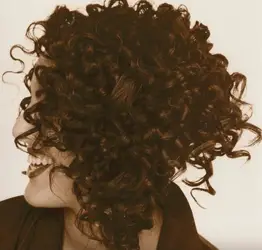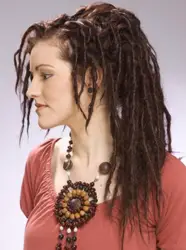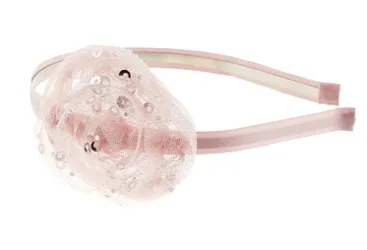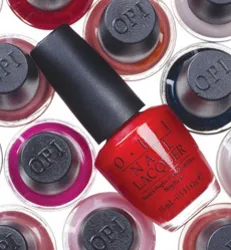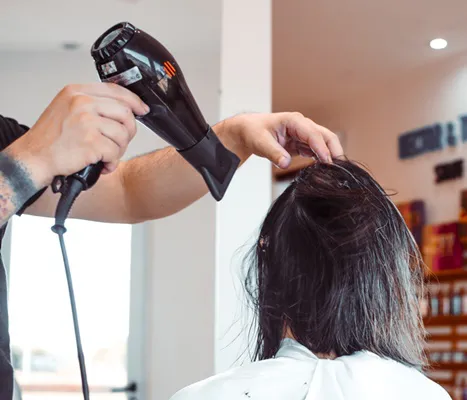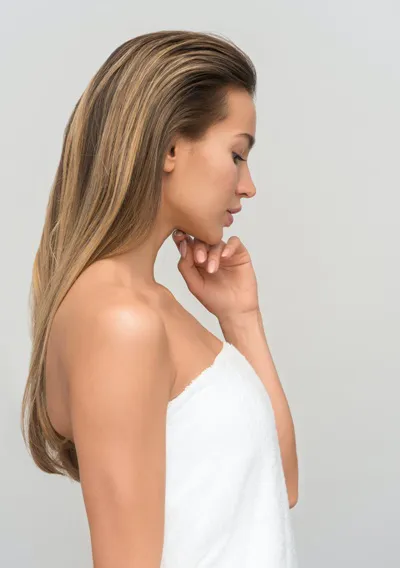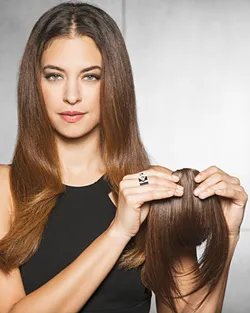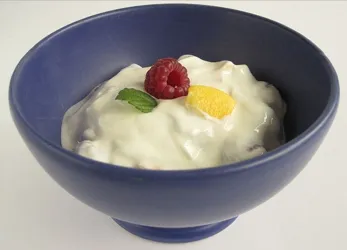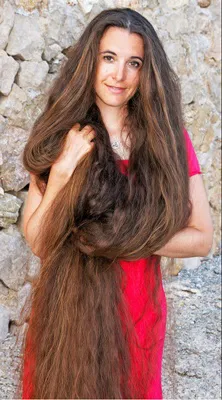
Hair Oil Facts And Fallacies
Introduction
Barbara Lhotan was an early adopter of hair extensions more than ten years ago when they were first become popular. Like everything she does in the hair world, Barbara, who is a senior educator and platform artist with Paul Mitchell, looks for ways to push extensions to the very edge. Dispel those "hair oil" myths: Tips from Macadamia Natural Oil I don't usually like to reprint self-serving tips from companies, but I am a huge hair oil user and frequently hear some of these "myths" from folks, so figured this self-serving tip sheet has mass appeal. Still hesitant to use hair oils even though they are the hottest trend in salons across the country? Let Macadamia Natural Oil dispel the common concerns and open your beauty routine to the most simple, effective solution to beautiful hair. Myth 1: Using hair oil, such as Macadamia Natural Oil, will make my scalp and hair greasy. Fact: Oils such as Macadamia and Argan are absorbed quickly into the hair and scalp leaving no greasy residue (as seen with serums or other shine products). Macadamia Nut Oil is an essential fatty acid, yet has the uncanny similarity and ability to mimic the body’s own natural oils, allowing for unparalleled absorption and rapid penetration into hair and skin. Be a Nut! Take the Macadamia challenge and rub a pump of the oil into your hands. After 5 minutes, check your hands. You’ll be amazed! Myth 2: I can't use oil on my fine hair. Fact: Hair Oil is unbiased when it comes to hair type or hair length. From kinky and curly to fine or thin, hair oils such as Macadamia Natural Oil can be used on all types. Share it in the shower or horde it for yourselves, this hair oil is created equal! Be a Nut! Still gun-shy about oils? Use half a pump on your first use. Myth 3: All oils are the same Fact: No! In fact not only are there many different types of oils such as macadamia nut, argan, acai, flaxseed, sweet almond, sunflower and coconut, but the extraction process also varies greatly and can play a critical role in the oil’s efficacy. Be a Nut! Soothe your skin, hair and senses by adding a few drops of oil in your next bath. Myth 4: I have temperamental skin and I am afraid using oil will cause break outs on the skin around my hair line. Fact: The benefits of Macadamia Nut Oil aren't just for the hair. As mentioned earlier, this particular oil mimics the body’s own natural oil, replenishing the body of of the oils that leave the skin due to everyday environmental factors. Trust us, no one is dare suggesting that you rub baby oil or mineral oil anywhere near your skin! But the oils used in Macadamia Natural Oil are as restorative and beneficial to the skin on your face, as the skin on your head! Be a Nut! Apply oil on dry skin spots such as elbows, knees, and heels. Myth 5: I As long as I eat foods with essential fatty acids like salmon and walnuts, my hair will be healthy. Fact: While it is true that a diet rich in omega 3’s is beneficial to the skin and hair as well as the heart, it is definitely not the most effective way to restore the health of the hair. In fact, studies show that ingesting foods that contain omega 3’s and applying them topically with an oil such as Macadamia Oil, will provided added benefits and maximum effect. Be a Nut! Massage any left over oil into your cuticles and see how quickly your hands and nails drink up the moisture! Hair Butter Recipe1.5 cup of Aloe Vera Gel (from the plant or bottled) 2 oz Shea Butter 2 oz Castor Oil 2 tsp* Organic Honey which is presoftened 2 tsp Glycerine 2 oz of Lecithin or 2 oz of Vitamin E (from liquid caps or bottled) Step By Step InstructionsMelt Castor Oil and Shea Butter together in a double boiler. If you prefer you can pour the mix into a heat proof cup or bowl emerged into a pot of boiling water. Slowly stir in honey. Combine Aloe Vera Gel, Glycerin and Lecithin (or Vitamin E) in a blender or mixer. Mix slowly adding the pre-mixed Castor Oil and Shea Butter. *1 tsp = Teaspoon Hair Butter Recipe4 oz of Unrefined Shea Butter 1 tbsp* of Amla Oil or Jojoba Oil 2 tbsp of Organic Coconut Oil Or Canola Oil 2 tbsp of EVOO (Extra Virgin Olive Oil) 1 tbsp of Castor Oil or Argan Oil 1 tbsp of Almond Oil 8-12 drops of Rosemary Oil 2 tbsp of Aloe Vera Gel (from the plant) 8 drops of Ylang Ylang or other EOs to add fragrance Feel free to substitute lighter oils (Jojoba for Amla) if your hair needs a lighter formulation. Step By Step InstructionsMelt Shea Butter in a double boiler on the stove. If that's not possible melt in the microwave although this is not preferred. Mix the Alma or Jojoba Oil, Coconut or Canola, EVOO, Castor or Argan Oil, Almond and Rosemary Oil into the melted Shea Butter. Add the Aloe Vera Gel as the last step. Pour the mixture into a multi-temperature bowl. Refrigerate to harden. Once the hair butter has been refrigerated and is cold, take it out and let it settle at room temperature. The mixture should become creamy at room temperature. If you prefer a thicker mixture, keep it refrigerated and heat just a little bit before using the butter on your hair as a treatment. This recipe is extremely rich. It will be overly moisturizing for some hair types and textures, but this butter is excellent for hair which is naturally curly, wavy or kinky and in need of intense moisturizing. This recipe works best on hair which is damp so that it can be more easily absorbed down deep into the cuticle. *1 tbsp = Tablespoon Optional Hair OilsThere are many different types of hair oils available. 1. Sweet Almond Oil - Extracted from almonds, sweet almond oil is pale yellow in color. It is slightly oily but absorbed quickly. 2. Avocado Oil - Avocado oil is pressed from the avocado fruit. Deep green in color, avocado oil is a heavier oil and is usually mixed with other oils. Avocado oil is roughly double the cost of sweet almond oil. People who are sensitive to latex may be sensitive to avocado oil. 3. Apricot Kernel Oil - Similar in texture and color to almond oil but more expensive because its rare. Rich in Vitamin E. Longer shelf life than the typical oil. Apricot oil is not greasy or heavy. Good substitute for sweet almond oil for people with allergies. 4. Jojoba Oil - Jojoba is actually a wax extracted from the seed of the jojoba plant. Jojoba is a good option for most people prone to back acne because it is thought to have antibacterial properties and contains long chain wax esters that closely resembles skin sebum. Jojoba has a very long shelf life, so it's a good choice if you don't use it regularly. It is very well-absorbed, which makes it a favorite carrier oil for aromatherapy. Jojoba is usually not irritating to skin. Jojoba oil is so silky and quickly absorbed, you may need to reapply it often or mix it with other oils listed here. It is more pricey than sweet almond oil. 5. Fractionated Coconut Oil - Although you may think of coconut oil as being a thick, white solid oil, fractionated coconut oil is actually a light, non-greasy, liquid oil. It is called fractionated coconut oil because it contains only a fraction of the whole oil. The long-chain triglycerides have been removed, leaving only the medium-chain triglycerides. Fractionated coconut oil is less pricey than many other oils (it's comparable to sweet almond oil) and like jojoba oil, has a very long shelf life. But perhaps the top feature of fractionated coconut oil is that it tends not to stain sheets, a problem with most massage oils. 6. Sunflower Oil - A light, non-greasy oil that won't leave skin feeling oily. The oil, extracted from sunflower seeds, is rich in the essential fatty acid linoleic acid, as well as palmitic acid and stearic acid, all components of healthy skin. The amount of linoleic acid in skin declines with age and can be stripped by harsh soaps and cleansers. Sunflower oil can go rancid quickly, so it should be purchased in small quantities and stored in a dark cool area. Squeezing one or two capsules of pure vitamin E oil into the bottle may help to extend the shelf life. People with allergies to the sunflower plant family should avoid sunflower oil. People with nut allergies should not use almond, peanut or other nut based oils. 7. Cocoa Butter - Cocoa butter is very rich and has a distinct chocolate aroma. It is solid at room temperature and has a heavy texture, so it needs to be blended with other oils or used only for very small areas. 8. Grapeseed Oil - In many respects, grapeseed oil makes a great massage oil. It has little-to-no odor, and it has a smooth, silky texture without being greasy. Most grapeseed oil is extracted from grape seeds using a solvent (rather than being pressed from the seeds), which some aromatherapists say make it an inferior oil for aromatherapy massage. 9. Kukui Nut Oil - A light, thin, non-greasy oil. Native to a Hawaii, kukui nut oil is typically used on all skin types, including oily skin and sun-damaged skin. 10.Olive Oil - Most people are familiar with olive oil as a cooking oil, but it is occasionally used for massage. It is a heavy oil with a greasy or sticky texture and recognizable aroma that many associate with cooking, so it's usually not used on its own for massage. One study compared topical olive oil with sunflower oil and found that olive oil had no effect on epidermal barrier function, whereas topical sunflower oil resulted in significant improvement in the skin barrier. 11. Sesame Oil - Sesame oil is considered the traditional medicine of India. Sesame oil is especially useful for nourishing and detoxifying and for poor circulation and excessive dryness. Sesame oil is a rather thick oil that may leave hair feeling oily, so it can be blended with lighter massage oils. The unrefined oil has a strong aroma. 12. Shea Butter - Extracted from the seeds of a tree native to Africa, shea butter is a solid at room temperature. Like cocoa butter, shea butter is heavy and can leave an oily feeling. It blends easily with other oils. Shea contains a natural latex, so people with latex allergies should do a patch test before using it. 13. Wheat Germ Oil - Wheat germ oil is considered too thick to use on its own as a hair oil, but it can be blended with lighter oils. Wheat germ oil is rich in Vitamin E. Some people will substitute Vitamin E for wheat germ. 14. Hazelnut oil - This nut based oils is very fine in texture. It has great moisturizing qualities. Hazelnut oil can help tone and tighten the skin while strengthening capillaries and assisting in cell regeneration. 15. Holy oil is known as an ideal carrier oil due to its molecular structure. It carries essential oils deep into the skin. An excellent glide, non-greasy, odorless, hypoallergenic oil. 16. Pecan Oil 17. Mustard Oil 18. Peanut Oil 19. Canola (Rapeseed) Oil 20. Emu Oil 21. Evening Primrose Oil 22. Walnut Oil 23. Macadamia Nut Oil 24. Vegetable Oil 25. Tea Tree Oil Be Creative To Create Hot Curly Extensions Hairstyles
Barbara and I talked at length about this curly extension hairstyle because I was thrilled when I saw what she had created for Linzie. Barbara explained that people with short hair can have hair extensions without traditional clip-ins, fusion or sewn-in for special occasions. This extension look could last for up to three days as long as the hair was carefully protected during sleeping. It might need some touch ups but certainly would look good for a special weekend. The beauty of Barbara's style for Linzie is that it honored her natural curly hair and even incorporated her ringlets into the finished style. It also gave her a hot new hairstyle which added a little bit of length to her strands and amped it up with the fashionable pink and orange. Can anyone create this look? Of course it depends on a number of factors but if you find a talented hair extension expert like Barbara who is willing to be creative anything is possible. I personally love how Barbara is constantly looking for great new ways to create new hairstyles for curly girls. Social Media Network InformationPlease follow me on Twitter at: http://Twitter.com/HairBoutique. I look forward to meeting new Visit us at Hairboutique.com located at: http://www.HairBoutique.com, on Facebook, MySpace and YouTube. Thank you for visiting us at The HairBoutique Blog and for leaving your comments. They are very much appreciated. We apologize in advance but must remove any direct advertisements or solicitations. Original Publication Date: 07/30/10 - Revised Date: 08/04/10 | ||||||
|
Social Media Network Information
Please follow us on Twitter at: https://Twitter.com/HairBoutique. I look forward to meeting new people from all walks of Twitter and learning from their Tweets.


